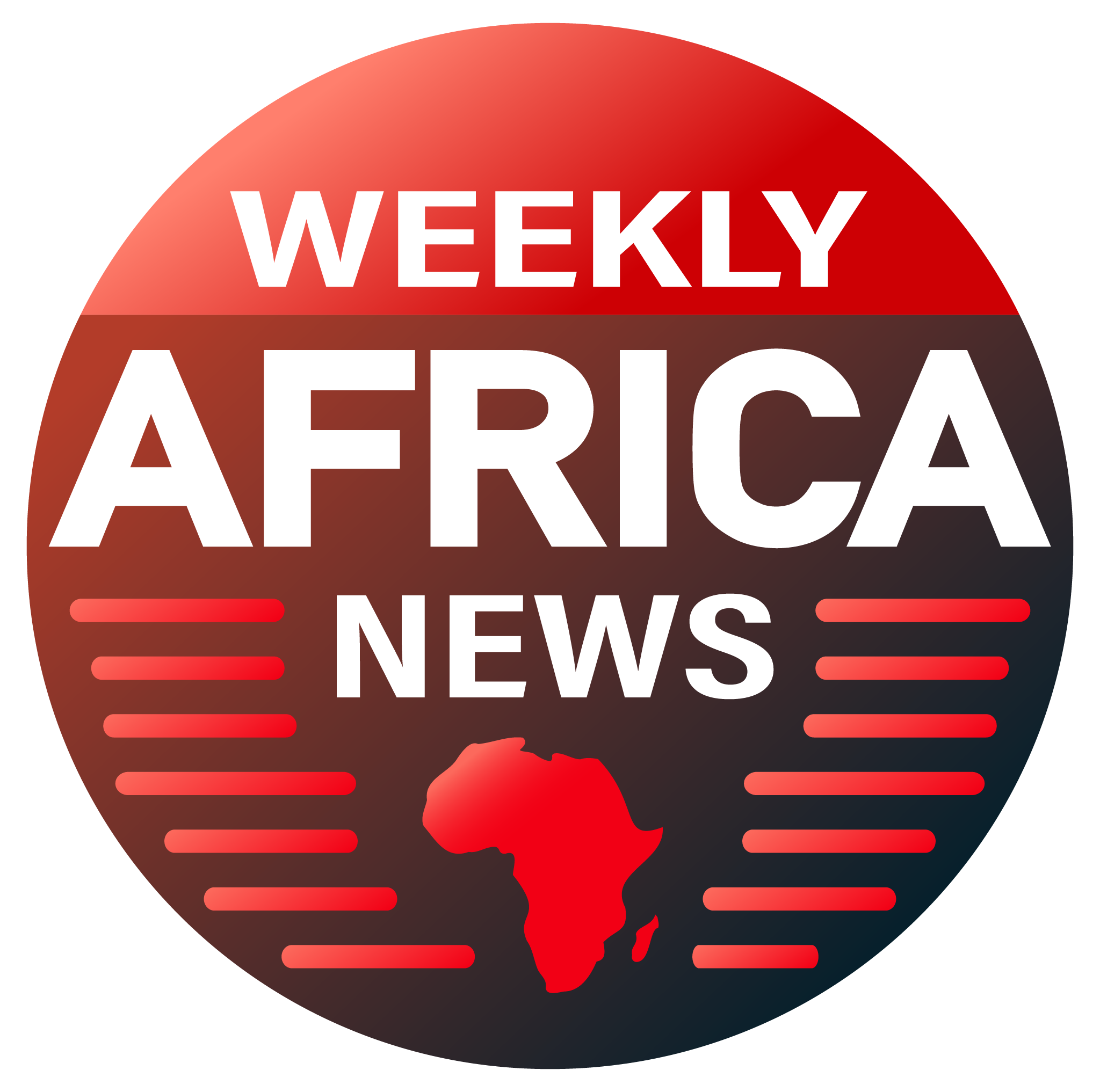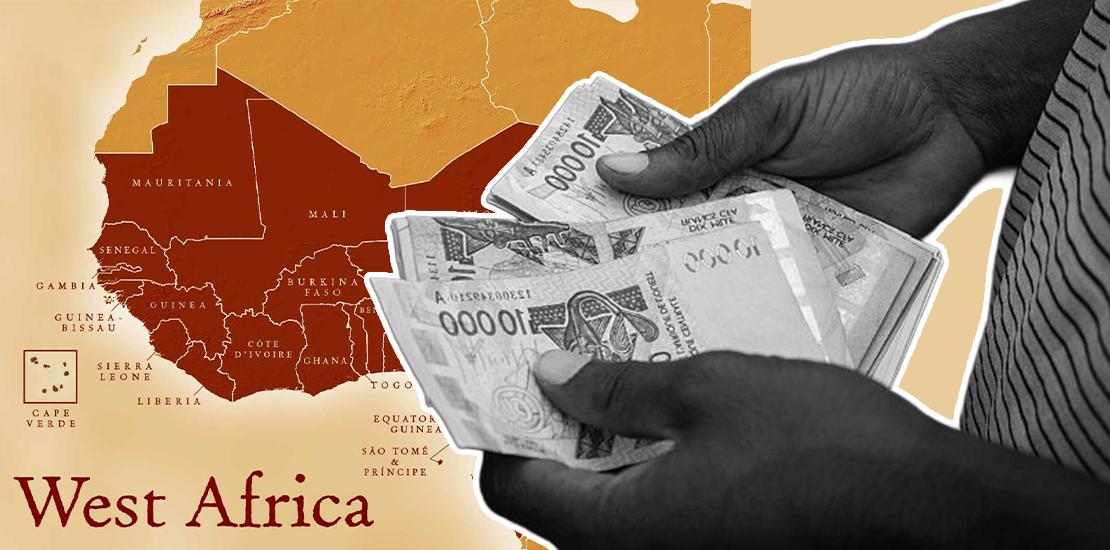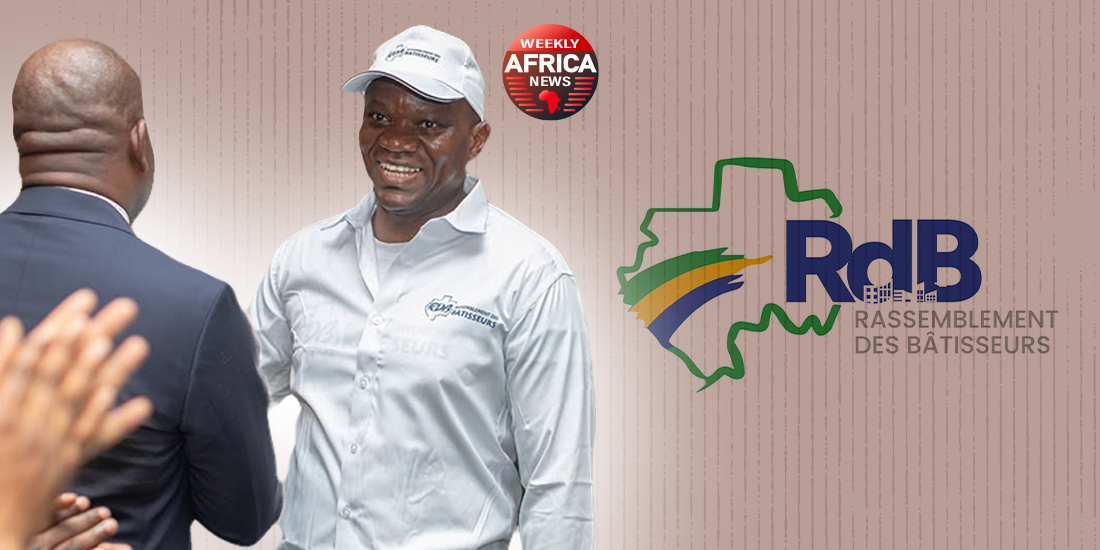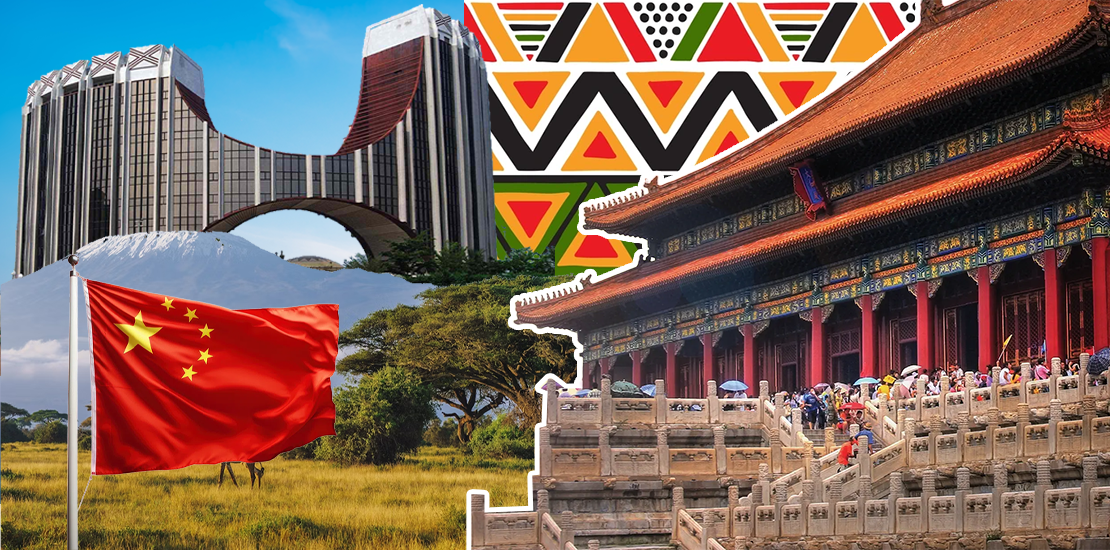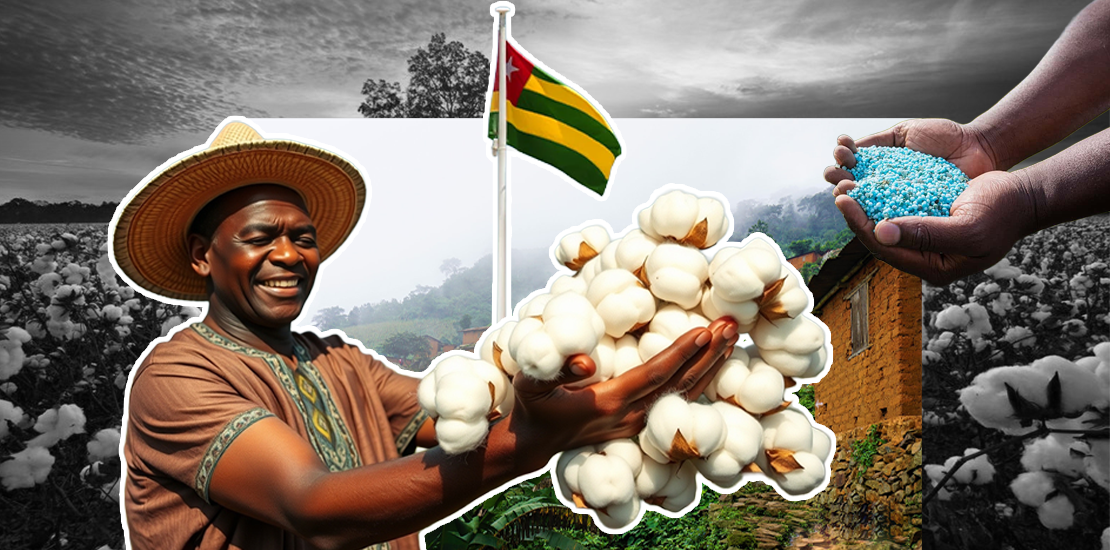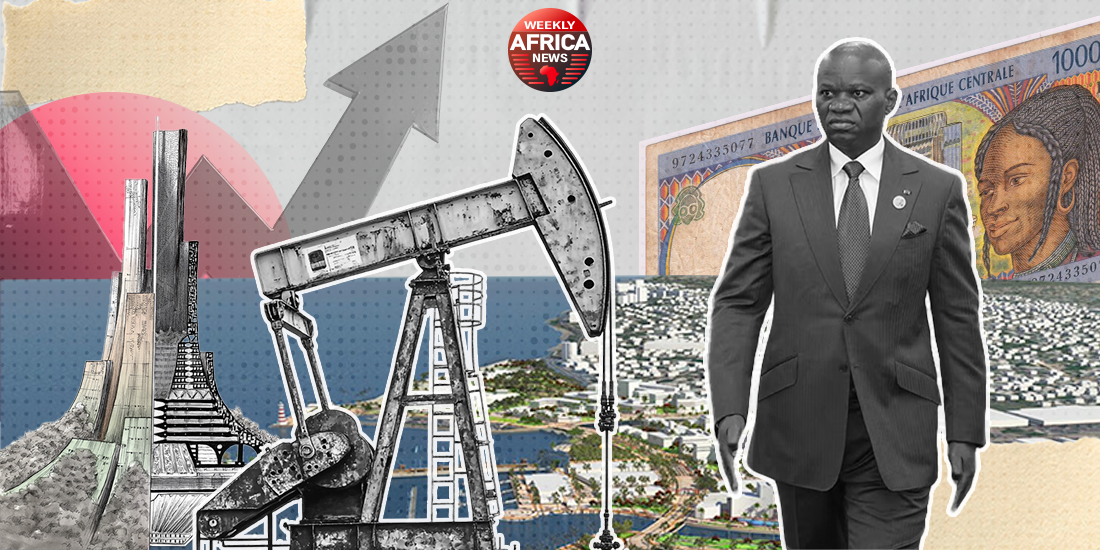In Togo, cotton, long heralded as a “white gold”, is going through a turbulent period where public interests, private strategies and donor intervention are intertwined. While seed cotton production has fallen to 60,403 tonnes by 2024-2025, public authorities are maintaining a purchase price of 300 CFA francs per kilo and subsidized fertilizers at 14,000 CFA francs per bag. Behind these figures lies a system of input supply and industry organization that concentrates power in the hands of a few players, raising questions of transparency and conflicts of interest.
In 2020, the Singaporean group Olam acquired 51% of Nouvelle Société Cotonnière du Togo (NSCT), the pivotal company that buys seed cotton, supplies producers with inputs and organizes the ginning process. The State and the producers’ federation retain minority shares. This takeover is part of a broader strategy of local processing via the Plateforme Industrielle d’Adétikopé (PIA), a public-private partnership led by Arise Integrated Industrial Platforms to develop a textile chain “from fiber to garment”. Historically, Arise IIP was linked to Olam before a reorganization of its shareholder base. Even if these links have evolved, the NSCT-PIA linkage has, from the outset, posed a simple question: when the main cotton buyer and input distributor is connected to the industrial zone responsible for absorbing and transforming the fiber, who arbitrates the general interest (price, input quality, delivery schedule)?
The NSCT buys and distributes fertilizers, herbicides, insecticides and seeds to producer groups, with administered prices and public subsidies. In parallel, the Centrale d’Approvisionnement et de Gestion des Intrants Agricoles (CAGIA) manages fertilizers for food crops. Togo remains largely dependent on imports: in 2022, over 114,000 t of fertilizers were imported (mainly NPK and urea); in 2023, around 109,000 t. A local fabric of blending exists, but the industrial tool remains modest in relation to needs. The government has announced the creation of additional units and the valorization of domestic phosphate to produce fertilizers, with partnerships underway. In the short term, external dependence remains, as illustrated by negotiations with foreign buyers of phosphate rock and regional discussions to secure supplies.
On paper, safeguards exist: international calls for tender for cotton inputs, regional directives (UEMOA/ECOWAS) on fertilizer subsidies, initiatives supported by donors (World Bank, IFAD, GIZ, IFDC) to improve transparency, quality and targeting (e.g. AgriPME electronic portfolio). In reality, two vulnerabilities persist. Firstly, the late or incomplete delivery of inputs, which is particularly critical in a crop as closely timed as cotton; an upstream logistical failure penalizes the entire cycle. Secondly, the recurrent opacity of certain key public companies (starting with SNPT in the phosphate sector), regularly highlighted by transparency mechanisms, feeds suspicion about the alignment between industrial choices and the national interest.
With an average yield of around 0.8 t/ha and a floor price set at 300 F CFA/kg, gross income per hectare remains under pressure when inputs rise, even if subsidized. NPKSB and urea fertilizers are maintained at 14,000 F CFA a bag, but their availability, quality and effective dosage condition the real impact on yields. The President of the Federation of Cotton Producers, Koussouwè Kourouféi, sums up a wider anguish: “The farming population is aging, and young people are turning away. The whole cotton sector is at risk. The number of producers has plummeted – from around 111,000 in the 2020-2021 campaign to 76,000 in 2024-2025 – a social as well as an economic wake-up call.
Technical and financial partners are funding subsidies, logistics and capacity-building (field schools, digitization, best practices), and are pushing for the harmonization of fertilizer policies in West Africa (Lomé Declaration, 2023). This assistance has cushioned the shock of global input prices. But it does not fully answer the fundamental question: how can we prevent import dependency, outsourcing of strategic segments (supply, processing) and concentration of levers from reducing Togo’s room for maneuver in its own value chain? As long as the transformation of local phosphate into fertilizer remains partial, and the governance of public enterprises and PPPs opaque, agricultural sovereignty will remain fragile.
The downturn in production, despite attractive prices, reflects a number of factors: climatic variability, abandonment of cultivation by some producers, unfavorable economic trade-offs when inputs arrive late or cost too much, and perfectible governance that complicates the accountability of players. The reforms undertaken (industrialization via PIA, capacity building, targeted subsidies) can have an impact if three conditions are met: (1) transparency of contracts and shareholdings at the NSCT-PIA-input supplier interface; (2) traceability and quality control of fertilizers distributed, with deliveries on time; (3) a price-setting mechanism backed by verifiable data (costs, yields, international prices) and effective representation of producers.
In short, the Togolese cotton-fertilizer “ecosystem” is not doomed; it is at a crossroads. The strategy of local processing and industrial investment can create value if accompanied by a verifiable alignment of interests and real competition in input markets. Failing this, the sector will continue to suffer from a combination of budget subsidies, sub-optimal farmer incomes and strategic dependence, to the detriment of the agricultural sovereignty the country aspires to achieve.
